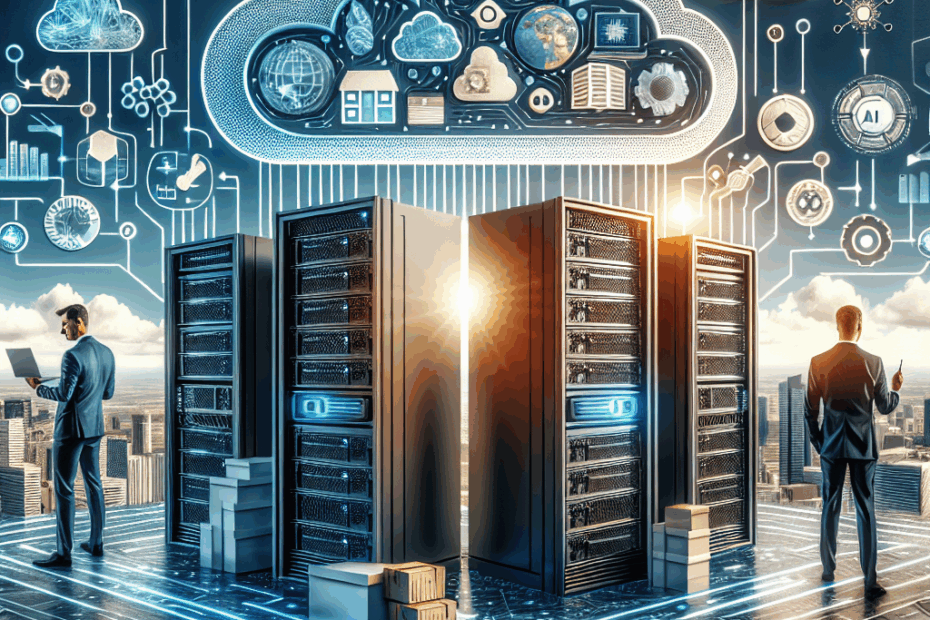“`html
The Cloud is Coming Home? Why Some Companies Are Moving Away From It
Hey everyone, John here! Today we’re talking about something a little surprising: some companies are actually bringing their data and computing back into their own offices after relying on the “cloud” for so long. It sounds a bit backwards, right? Let’s break it down.
What’s This About Clouds Coming Back Down to Earth?
For years, we’ve heard about the amazing benefits of the public cloud (like Amazon Web Services, or AWS). It’s like renting space in a giant, super-powered computer that someone else manages. But now, some businesses are finding that it’s not always the perfect solution, especially when it comes to the latest AI technology. AWS is even offering ways to bring some of their cloud services back into your own office, with things like their new Outposts racks.
Think of it like this: Imagine you always ate out at restaurants. It’s convenient! But if you’re cooking every single meal for a large family, every single day, eating out becomes super expensive. Sometimes, it’s cheaper and more efficient to cook at home.
Why Are Companies Shifting Gears?
There are a few big reasons why companies are rethinking their cloud strategy:
- Cost: The cloud can get expensive, really expensive, especially when you’re doing a lot of heavy-duty computing.
- Control: Some companies want more control over their data and how it’s processed. Think of it like wanting to know exactly what ingredients are in your food!
- Speed: For some tasks, having your computers close by (on-premise) can be much faster than sending data back and forth to the cloud.
The Rise of “Hybrid Cloud”
A lot of companies are now using something called a “hybrid cloud.” This is like having the best of both worlds: using the public cloud for some things and keeping other things on their own computers (on-premises). Let’s get some clarity here:
Lila: John, what does “on-premises” actually mean? It sounds kind of fancy.
John: Good question, Lila! “On-premises” just means that the computers and servers are physically located in the company’s own office or data center. It’s the opposite of using the public cloud, where the computers are located in someone else’s data center. Think of it as having your own garden (on-premises) versus buying vegetables from the grocery store (public cloud).
AI: The Game Changer
One of the biggest drivers behind this shift is the rise of artificial intelligence (AI). AI systems need a lot of computing power, especially for training and running them. And that can get very, very expensive in the public cloud. The article mentions “generative AI workloads”.
Lila: Wait, what are “generative AI workloads?” That sounds complicated!
John: Okay, imagine you’re teaching a computer to create things, like write stories or generate images. That’s generative AI. The “workload” is simply how much work the computer has to do to learn and create those things. So, “generative AI workloads” are the tasks involved in training and running these AI systems. It requires a lot of computing power!
Because of this, companies are increasingly looking at “on-prem” or “hybrid” solutions for their AI needs.
What Does This Mean for the Future?
The key takeaway is that companies need to be smart about where they put their data and their computing. Here are the main things to consider:
- Figure out what’s important: Understand your performance, cost, and control requirements.
- Be flexible: Build systems that can work both in the cloud and on-premises.
- Think long-term: Plan for the future, especially when it comes to AI.
Are Cloud Providers Pricing Themselves Out?
The article suggests that the increasing cost of resource-intensive tasks in public clouds might be driving companies away. It’s like a restaurant charging too much for a simple dish – eventually, people will start cooking at home.
While cloud providers are trying to offer tailored solutions, it might not be enough to keep everyone on board, especially as AI becomes more prevalent.
My Thoughts
This is a really interesting trend! It shows that the tech world is always evolving, and what works today might not work tomorrow. It also highlights the importance of understanding your own needs and not just blindly following the latest hype.
Lila’s Perspective: Wow, this is a lot to take in! But it makes sense that companies would want to save money and have more control. I guess the cloud isn’t always the best answer for everything.
This article is based on the following original source, summarized from the author’s perspective:
Public clouds burnish their on-premises options
“`
